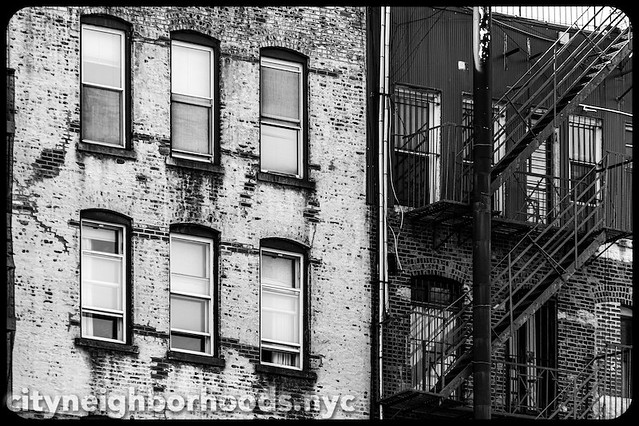Mobile users, you may need to rotate your device or click the + sign above to see the full list of neighborhoods.
NoHo - Manhattan - NYC
One of Manhattan's "newer" neighborhoods, NoHo (North of Houston Street) is a sliver revival, centered on Bond Street, and anchored by Astor Place.
NoHo VIDEO
The neighborhood
NoHo is a small neighborhood, between Houston Street and East 8th Street, Mercer Street and Bowery / 4th Avenue. Great Jones Street and Bond Street are cobblestone throwbacks, while Astor Place features shimmering new glass buildings.
NoHo, short for "North of Houston Street," is a vibrant neighborhood located in the heart of Manhattan. Known for its artistic and bohemian character, NoHo is a hub of creativity and culture. The neighborhood is famed for its historic architecture, with its streets lined with beautifully preserved cast-iron buildings that harken back to the 19th century. NoHo is a haven for artists, musicians, and actors, with numerous art galleries, theaters, and performance spaces dotting the area. It is also home to the renowned New York University (NYU), attracting a diverse and intellectual crowd. The neighborhood's dynamic energy is further enhanced by its eclectic mix of trendy boutiques, cozy cafes, and chic restaurants. Additionally, NoHo is adjacent to the vibrant neighborhoods of Greenwich Village and SoHo, providing easy access to an abundance of cultural offerings. With its artistic flair, historic charm, and vibrant atmosphere, NoHo is a captivating neighborhood that showcases the artistic spirit and creative pulse of Manhattan.
The neighborhood of NoHo, Manhattan earned its name as an abbreviation for "North of Houston Street." Houston Street serves as the southern border of the neighborhood, and as the area developed, the need arose for a distinctive name to represent this particular section of Manhattan. In the early 20th century, the designation "NoHo" gained popularity as a way to distinguish it from neighboring areas like SoHo (South of Houston Street). The name has since become widely recognized and embraced, reflecting the unique character and identity of this vibrant and artistic neighborhood. Today, NoHo stands as a cultural hotspot, known for its historic architecture, artistic community, and dynamic atmosphere.
The neighborhood of NoHo, Manhattan has a rich and diverse history that traces back to the early days of New York City. Originally part of the Dutch settlement of New Amsterdam, the area evolved from farmland into a bustling commercial and residential district in the 19th century. NoHo's distinct architectural character stems from its history as a manufacturing and commercial hub, with many of its iconic cast-iron buildings constructed during the 19th century. Over time, the neighborhood experienced periods of decline and revitalization, ultimately transforming into a center for artistic expression and creativity. In the 1960s and 1970s, NoHo became a magnet for artists and bohemians, attracted by the affordable loft spaces and the neighborhood's proximity to other artistic enclaves like Greenwich Village and SoHo. Today, NoHo retains its artistic and cultural legacy, showcasing a vibrant mix of art galleries, theaters, and performance spaces. Its historic charm, coupled with its artistic ambiance, has solidified NoHo as a unique and captivating neighborhood in the heart of Manhattan.
The neighborhood of NoHo, Manhattan is home to several major landmarks and attractions that draw visitors from near and far. One of the notable landmarks is the Astor Place Theatre, an iconic venue known for hosting groundbreaking theatrical productions. The historic Colonnade Row, a row of beautifully preserved Greek Revival townhouses on Lafayette Street, stands as a testament to the neighborhood's architectural heritage. The Public Theater, a renowned performing arts venue, has been a cultural hub in NoHo since its founding in the 1960s, presenting innovative plays and performances. Cooper Union, a prestigious institution for art, architecture, and engineering, is also situated in NoHo, with its Foundation Building serving as an architectural gem. The neighborhood is further enriched by the presence of art galleries, including the New Museum, which exhibits contemporary and cutting-edge artwork. NoHo's vibrant dining scene, featuring a wide range of restaurants and cafes, is another attraction for locals and visitors alike. With its blend of cultural institutions, architectural wonders, and culinary delights, NoHo offers a captivating experience that showcases the artistic and eclectic spirit of Manhattan.
NoHo, Manhattan has been home to a number of famous individuals who have made significant contributions in various fields. One notable figure is American playwright and actor Sam Shepard, who resided in the neighborhood and became known for his prolific career in theater and film. His groundbreaking plays, such as "Buried Child" and "True West," earned him critical acclaim and cemented his status as a prominent figure in American theater. Another notable resident is actor and director Edward Norton, known for his roles in films like "Fight Club" and "American History X." Norton has not only made a name for himself as an actor but also as a dedicated environmental activist. NoHo has also attracted musicians, including rock legend David Bowie, who lived in the neighborhood during his time in New York City and left an indelible mark on the music industry with his innovative music and iconic persona. These individuals, among others, have called NoHo home and have contributed to the artistic and cultural landscape of the neighborhood and beyond.
Highlight Gallery
Click here for the full NoHo photo gallery:
Explore Every New York City Neighborhood:
All photography provided by Samuel Walters


